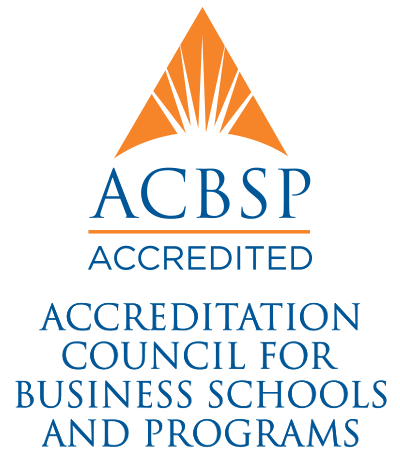The landscape of higher education has shifted dramatically in the last five years. By 2025, the question is no longer “Is an online degree valid?” but rather “Which online degree offers the highest return on investment?” As digital infrastructure matures and global corporations shift toward remote-first or hybrid work models, the accredited online business degree has emerged as a premier credential for upward mobility.
- The New Standard: Digital Proficiency as a Business Core
- 1. Accreditation: The Non-Negotiable Trust Signal
- 2. The Financial Equation: ROI and Salary Data for 2025
- 3. Emerging Specializations Driving Demand
- Artificial Intelligence & Business Analytics
- Fintech (Financial Technology)
- Green Logistics and Sustainable Supply Chain
- 4. Flexibility and the “Asynchronous” Advantage
- 5. Networking in a Virtual Ecosystem
- 6. Financial Aid and Funding Your Degree
- 7. The Technology of Learning: What to Expect
- 8. How to Choose the Right Program
- Conclusion: The Strategic Move for Your Career
This guide explores the definitive reasons to pursue business education online in the 2025-2026 academic year. We will cover accreditation standards, projected salary data, emerging specializations like Fintech and AI, and the financial strategies that make this path viable.
The New Standard: Digital Proficiency as a Business Core
The primary argument for online business education in 2025 is the medium itself. Modern business is digital. When you study online, you are not just learning about business; you are practicing the very operational methods used by Fortune 500 companies.
Collaborating on a capstone project via Zoom, managing workflow through Asana or Trello, and analyzing data sets in cloud-based environments are no longer just “school work.” They are professional rehearsals. Employers in 2025 are actively seeking candidates who demonstrate remote leadership capabilities. An online degree proves you possess the self-discipline and digital fluency required to lead distributed teams.
1. Accreditation: The Non-Negotiable Trust Signal
Before discussing curriculum or cost, we must address the single most critical factor in your decision: accreditation. In the online space, accreditation acts as the primary filter for quality. It ensures that your degree will be recognized by employers, licensing boards, and other universities.
The “Big Three” Business Accreditations
For business schools, institutional accreditation is necessary, but “programmatic accreditation” is the gold standard. You should look for these three specific acronyms:
AACSB (Association to Advance Collegiate Schools of Business)

This is widely considered the highest standard of achievement for business schools worldwide. Less than 6% of the world’s business schools hold AACSB accreditation.
- Focus: Research, academic rigor, and faculty credentials.
- Why it matters: Top-tier investment banks, major consulting firms (like McKinsey or Deloitte), and academia often recruit exclusively from AACSB-accredited programs. If your goal is a corporate executive role or a position in high finance, this is your target.
ACBSP (Accreditation Council for Business Schools and Programs)

- Focus: Teaching excellence and student learning outcomes.
- Why it matters: ACBSP schools often emphasize practical skills over theoretical research. This accreditation is highly respected for students who want to apply skills immediately in the workforce, such as in management, human resources, or marketing roles.
IACBE (International Accreditation Council for Business Education)

- Focus: Mission-driven outcomes and specific career preparation.
- Why it matters: This is common among smaller private colleges that offer personalized attention. It validates that the program delivers on its promises regarding professional skills.
Regional vs. National Accreditation
Always prioritize “Regional Accreditation” over “National Accreditation.” Regional accreditation (such as SACSCOC or HLC) is the standard used by major public state universities (like the University of Florida or Penn State). Credits from regionally accredited schools are easier to transfer.
2. The Financial Equation: ROI and Salary Data for 2025
The cost of education is an investment. In 2025, the return on that investment (ROI) for business degrees remains historically high, particularly for specialized master’s degrees.
Projected Salaries for Business Specializations (2025-2026)
Data projections for the 2025 fiscal year indicate robust growth in technology-integrated business roles.
| Specialization | Projected Entry/Mid-Level Salary | Growth Outlook (2025-2030) |
| Management Information Systems (MIS) | $71,500 – $105,000 | High (16%+) |
| Financial Management | $95,000 – $160,000 | High (17%+) |
| Supply Chain Management | $79,000 – $110,000 | Very High (19%) |
| Digital Marketing Analytics | $75,000 – $120,000 | Moderate (8%) |
| Health Services Management | $85,000 – $118,000 | Very High (28%) |
| Business Administration (General) | $65,000 – $90,000 | Steady (6%) |
The Online Cost Advantage
Online programs often strip away the ancillary costs of higher education. You do not pay for parking, room and board, or physical campus facility fees.
- Tuition Models: Many programs now offer “pay-per-credit” or subscription models (competency-based learning) where you can finish as many courses as possible in a six-month term for a flat fee. This can reduce total degree costs by 40% to 50% compared to traditional pacing.
- Opportunity Cost: The ability to continue working full-time while studying is the greatest financial advantage. You do not lose two years of salary (potential $100,000+ loss) to get your degree.
3. Emerging Specializations Driving Demand
The generic “Business Administration” degree is still valuable, but the market in 2026 rewards specialization. High-paying niches are emerging at the intersection of business and technology.
Artificial Intelligence & Business Analytics
AI is the dominant theme for business education in 2025. Schools are integrating AI not just as a tool, but as a subject.
- The Curriculum: You will learn how to manage machine learning workflows, interpret predictive analytics, and make data-driven decisions.
- The Career: Roles include Business Intelligence Analyst and AI Product Manager. Companies need leaders who can translate between technical data scientists and non-technical stakeholders.
Fintech (Financial Technology)
Traditional finance is being disrupted by blockchain and decentralized finance (DeFi).
- The Curriculum: Courses cover cryptocurrency assets, algorithmic trading, and secure payment gateways.
- The Career: This is ideal for those looking to work in modern banking, startups, or venture capital.
Green Logistics and Sustainable Supply Chain
With the rise of ESG (Environmental, Social, and Governance) criteria, corporations are desperate for experts who can green their supply chains.
- The Curriculum: Circular economy principles, carbon footprint analysis, and ethical sourcing.
- The Career: Supply Chain Director or Sustainability Officer. This sector is seeing massive growth due to global regulatory changes.
4. Flexibility and the “Asynchronous” Advantage
The defining feature of modern online learning is the shift from synchronous (live classes) to asynchronous (on-demand) learning.
How Asynchronous Learning Works
In an asynchronous program, you log in at 2:00 AM or 2:00 PM. You watch pre-recorded lectures, participate in discussion boards, and submit assignments by a weekly deadline.
- Why it wins: This model is superior for working parents and professionals. It allows you to “chunk” your learning. You can study for 45 minutes during a lunch break or listen to lectures during your commute.
Stackable Credentials
A major trend for 2025 is “stackability.” Instead of committing to a full Master’s degree immediately, you can take a 4-course certificate in “Data Analytics.” If you enjoy it, those credits “stack” into the full MBA program later. This lowers the barrier to entry and allows you to upskill quickly for a promotion.
5. Networking in a Virtual Ecosystem
A common myth is that online degrees lack networking opportunities. In 2025, this is false. Virtual networking is often more efficient than traditional mixers.
Global Cohorts
In a local campus, your network is limited to people who live in that city. In a top-tier online program, your peer group spans the globe. You might work on a group project with a logistics manager from Singapore, a financier from London, and a tech entrepreneur from San Francisco. This global exposure is invaluable for understanding international markets.
Digital Alumni Platforms
Universities have invested heavily in digital alumni networks. Platforms like LinkedIn are integrated into the curriculum. Schools facilitate virtual mentorship matching, online career fairs with multinational recruiters, and exclusive slack channels for job postings.
6. Financial Aid and Funding Your Degree
Accredited online programs are eligible for the same federal and state financial aid as campus programs.
FAFSA and Federal Loans
By filling out the Free Application for Federal Student Aid (FAFSA), you access federal grants (like the Pell Grant for undergraduates) and low-interest federal loans. This is only possible if the school is accredited by a Department of Education-recognized agency.
Employer Tuition Reimbursement
Approximately 56% of major employers offer some form of tuition assistance. In 2025, companies view this as a retention strategy.
- Strategy: Check your HR handbook. Many companies will pay up to $5,250 per year tax-free for your education. This can cover a significant portion of an online degree.
Scholarships for Online Learners
There are now thousands of scholarships specifically dedicated to “non-traditional” or online learners. Universities often have internal grants for students who are returning to school after a workforce gap.
7. The Technology of Learning: What to Expect
The “online classroom” has evolved beyond simple message boards.
Adaptive Learning Technologies
Courseware now uses AI to adapt to your pace. If you answer a quiz question correctly, the system skips the remedial content and moves you to advanced concepts. If you struggle, it provides additional resources automatically. This makes learning faster and more personalized.
Virtual Reality (VR) and Simulations
Business schools are using simulations to teach strategy. You might run a virtual airline in a simulation, making decisions on fuel hedging and route planning, and see the stock price change in real-time based on your choices. This “gamification” leads to higher retention rates.
8. How to Choose the Right Program
With thousands of options, selection is difficult. Use this checklist to filter your choices:
- Accreditation Check: Is it AACSB, ACBSP, or IACBE?
- Graduation Rate: What percentage of students finish the program? A low rate indicates poor student support.
- Faculty Credentials: Do the professors have PhDs and real-world industry experience?
- Student Services: Do they offer 24/7 tech support? Do they have a dedicated online career center?
- Total Cost: Look at the “all-in” price, including technology fees and book costs.
Conclusion: The Strategic Move for Your Career
Choosing an accredited online business degree in 2025 is a strategic maneuver. It signals to the marketplace that you are ambitious, digitally literate, and ready for the future of work. Whether you are seeking a salary bump, a career pivot, or the security of a recession-proof credential, the online business degree offers a flexible, high-ROI pathway to achieve those goals.
The barriers to entry are lower than ever, but the standards for quality are higher. By selecting a program with the right accreditation and a curriculum aligned with 2026 market trends, you are not just getting a piece of paper. You are acquiring a toolkit for modern leadership.



